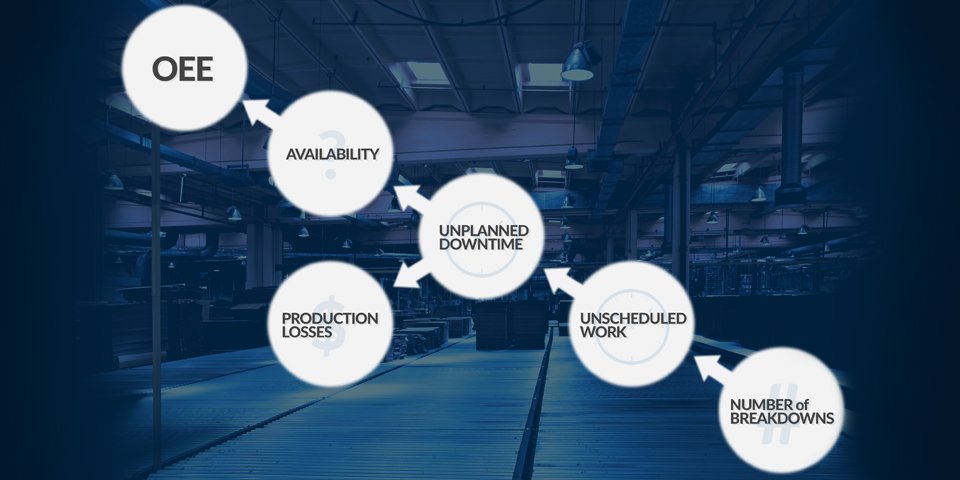
OEE and Cascading Objectives
As part of our series on reliability and condition based maintenance programs, this post outlines reliability metrics in a way that should support company KPIs and objectives.
Many well intended preventive and condition-based maintenance initiatives never get off the ground because they lack declared objectives and means of justification. Without objectives, it is difficult to prioritize or justify the initiatives. One successful method is to align the objectives of the program to the higher level objectives of the corporation or site. Most manufacturers have some form of established objectives at corporate, site, area and departmental levels.
The activities of a motor reliability program, for example, should support KPIs and objectives that cascade upward, therefore ensuring alignment with the mission of the company.
Maintenance reliability metrics and objectives can be highly correlated with operations, and a commonly used framework is Overall Equipment Effectiveness or OEE. Per Wikipedia, OEE is “a hierarchy of metrics developed by Seiichi Nakajima in the 1960s to evaluate how effectively a manufacturing operation is utilized."
OEE is an index that consists of three parts:
Quality – acceptable product over the total product produced.
Performance – the output (i.e., product) over the desired output.
Availability – the operating time over the planned operating time.
An OEE provides a convenient construct for evaluating and improving manufacturing performance across the multiple teams supporting it. Concepts of automation, motor control, and motor management affect all three components of OEE. In practice, most maintenance and motor programs tend to focus on availability, but there are implications for performance as well.
An OEE can be difficult in application, as it needs to be specific enough to act on and requires the means to measure. Measuring OEE at a mill level provides an overall indication, but measuring it or components of it at machine or process levels allows maintenance and reliability to more directly correlate their objectives.
Unplanned motor related downtime can have a very detrimental effect on availability, thus impacting OEE. Other examples of related metrics that may be considered include unscheduled work, breakdowns and the resulting production losses.
Regardless of what reliability metrics framework is in place, it is very important to be able to link objectives for purposes of alignment and measurement of impact.
So what's important?
What are the objectives and KPIs of the maintenance organization?
How do these objectives support those of operations and the company?
What are the most important areas to impact?
Are there known areas where motor reliability is impacting these objectives?

Per our customers:
“We measure OEE for our boiler and at machine level.” – Food manufacturer
“We observe OEE plant-wide, but the maintenance team is measured on availability.” – Paper mill
“We measure OEE on our main dryer and use it as a measure of effectiveness. Availability/downtime is observed as the primary metric mill-wide.” – Plywood mill
The answers will provide a foundation to aid in business case development and serve as a means of evaluation of impact. With that in place, the next step is understanding the financial constraints and budget of the maintenance organization. We will cover that in the next post of our series , as well as some of the specific KPIs you may want to reference.









